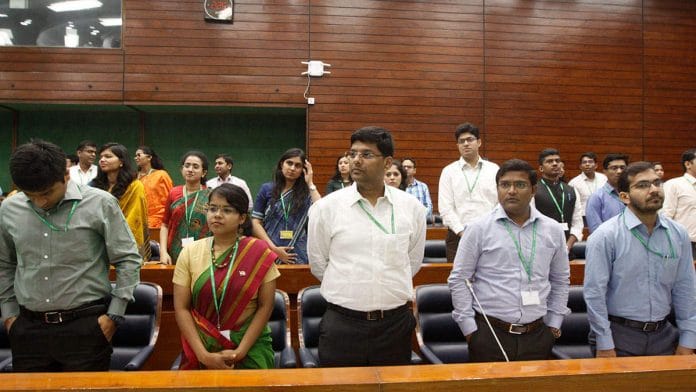Crises in India are not occasional disruptions—they are part of the daily rhythm of governance. Whether it is a massive religious congregation, election, or an unprecedented health emergency, India’s civil servants are repeatedly called upon to lead responses that test the limits of scale, speed, and coordination.
The Maha Kumbh Mela 2025 in Prayagraj stands as a remarkable example of large-scale public administration and inter-agency coordination. Over 45 days, the event welcomed an estimated 66.3 crore devotees—arguably the largest human gathering in recorded history. To accommodate such unprecedented footfall, authorities created a temporary city spanning 4,000 hectares, built 30 pontoon bridges, operated over 17,000 trains, and deployed 37,000 police personnel supported by over 2,700 AI-enabled surveillance systems.
While the event was not without its challenges, including a tragic stampede which killed at least 30 people, what stood out was the swift crisis response and the extraordinary behind-the-scenes efforts of thousands of public officials. From municipal engineers to senior district administrators, officials worked across government layers to ensure effective coordination, safety, and continuity throughout the festival.
This is not an isolated example. Every few years, India administers another high-stakes exercise—the general elections. With nearly 97 crore eligible voters, 1.5 crore polling personnel, and a deeply polarised political climate, elections are not just about logistics; they are about maintaining institutional credibility. And yet, cycle after cycle, the system delivers. It does face challenges, but also maintains consistency that reflects the strength and commitment of the civil service.
Looking beyond inefficiencies
India’s Covid-19 response similarly highlighted the quiet dependability of the country’s governance machinery. The Centre laid down protocols, provided resources and managed procurement. The states handled vaccinations, hospitals, and testing, while panchayats and local bodies enforced containment zones, distributed rations, mobilised community awareness, and implemented public health guidelines. The response was neither perfect nor uniform, but it was instructive: governance in India works when layers converge, roles are respected, and institutions trust their people on the ground.
One feature common to these high-pressure scenarios is the capacity of civil servants to rise above administrative silos. Crises have a way of flattening hierarchies, dissolving bureaucratic inertia, and focusing attention on the essentials. The adrenaline of urgency is often what brings out the best in the system. Officers accustomed to structured reviews and routine file work suddenly find themselves coordinating field-level operations, managing public anxieties, and making real-time decisions with lasting consequences.
However, this capacity for emergency response is frequently under-recognised. The narrative around government functioning often focuses on delays, inefficiencies, or systemic corruption. What is lost in this conversation is the professional strength that enables the state to deliver under duress, often with limited resources and ambiguous mandates. Firefighting is an occupational hazard in public service—but it is also a core competence.
Also read: Civil servants are running India’s regulatory bodies. It dilutes institutional independence
Supporting the system
Importantly, the seeming chaos of India’s federal system is not a weakness but a design feature. Be it the Centre or state and local governments, each brings different capacities to the table. In normal times, this may result in coordination challenges, but in times of crisis, it enables flexible, decentralised problem-solving. A central directive can be adapted at the district level with real-time local intelligence. Conversely, ground-level feedback can shape state-level policy adjustments. This is governance as a living system—adaptive, collaborative, and surprisingly responsive when aligned.
The success of such responses lies in the often-unseen collaboration between officials who understand that public service is not about individual recognition but about institutional reliability. The ability to stay calm under pressure, collaborate across lines of authority, and find solutions without precedent is not trained overnight—it is developed through years of fieldwork, observation, and trust in the system.
Recognition of this competence is more than ceremonial. For public institutions to sustain themselves, morale matters. Trust in civil servants—by political leadership, the media, and the public—enhances their effectiveness. The best way to support India’s administrative machinery is to acknowledge both its quiet contributions and its enormous potential.
Crises will continue to come. What matters is not merely how governments respond, but whether systems learn and adapt. India’s public officials have shown, time and again, that they can deliver when it counts. The least we can do is notice.
Dr R Balasubramaniam, is the Member-HR in the Capacity Building Commission of the Govt of India. Views are personal.
(Edited by Aamaan Alam Khan)







Sadly you can’t count on them for day to day normal routine work. No wonder Indian bureaucracy was ranked at the bottom in a recent international survey.
Exemplary.